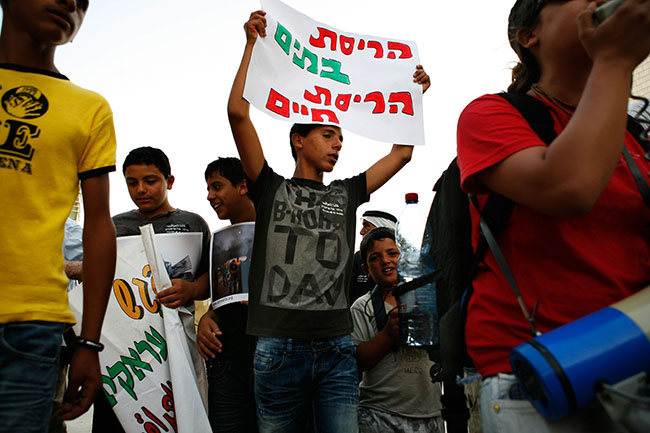This is a sample from my ongoing photo-documentary on Al Araqib. Al Araqib is a Bedouin village in the Negev, southern Israel. Despite pre-dating the state of Israel, the village is deemed ‘illegal’ by state authorities, which have planned to plant a Jewish National Fund forest in its place.
The photos were published on EI and you can see the whole photo-story here.

Sheikh Sayah al-Turi, head of the village, stands close to the ruins of his home in 2010. “We will not leave, we have documents proving this is our land and we will not leave,” he said.
“It is in the Negev that the creativity and pioneer vigor of Israel will be tested,” goes the quotation attributed to the state’s first prime minister, David Ben-Gurion.
If anything, it is the creativity and resilience of the southern Naqab (Negev in Hebrew) desert region’s indigenous Bedouin population that’s been put to the test in the decades since Ben-Gurion’s rule.
One such village, al-Araqib, is not formally recognized by the state. It has been demolished 90 times and counting in the past five years.
Its residents resist Israel’s efforts to forcibly transfer them and bury their land under forests planted by the Jewish National Fund.
Once a thriving community of 35 families, al-Araqib has been reduced to five tents inhabited by 20 people.
Israel’s policy towards rural communities in the Naqab is the same as in the occupied West Bank — to push Palestinians off the land on which they depend, and to concentrate them in the smallest areas possible.
If anything, it is the creativity and resilience of the southern Naqab (Negev in Hebrew) desert region’s indigenous Bedouin population that’s been put to the test in the decades since Ben-Gurion’s rule.
One such village, al-Araqib, is not formally recognized by the state. It has been demolished 90 times and counting in the past five years.
Its residents resist Israel’s efforts to forcibly transfer them and bury their land under forests planted by the Jewish National Fund.
Once a thriving community of 35 families, al-Araqib has been reduced to five tents inhabited by 20 people.
Israel’s policy towards rural communities in the Naqab is the same as in the occupied West Bank — to push Palestinians off the land on which they depend, and to concentrate them in the smallest areas possible.

 Fatima hangs clothes to dry in September 2010. Before the demolition that year, al-Araqib was home to three dozen families living in large tents or homes constructed with wood or plaster.
Fatima hangs clothes to dry in September 2010. Before the demolition that year, al-Araqib was home to three dozen families living in large tents or homes constructed with wood or plaster.

Hala’s and Fatima’s new home, built with materials salvaged from their demolished one, photographed in September 2010.

The remains of an animal pen in al-Araqib destroyed by Israeli authorities, photographed September 2010. It is now impossible for villagers to keep livestock, badly impacting their income. Most families have left to the nearby urban township of Rahat as a result.
